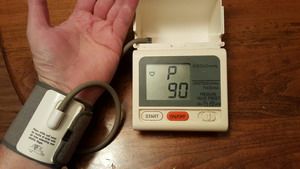
The cornerstone of nutritional science is the belief that scientific studies can determine what is best for you to eat. In science observing what happens to a single individual is considered basically worthless. It is called anecdotal evidence. Real science is concerned with studies on large populations of people or lab animals, because science wants to see what is the average response to whatever they are studying. The larger the sample of subjects that are studied, the more valid the study is considered to be. This would be true if we were all the same, or at least we were certain that we were absolutely average. Then we could feel confident that we would get the same response that the studies had found. Mark Twain once said “There are three kinds of lies: lies, damnable lies, and statistics.” Nutritional science is built out of statistics. It worships the illusion of the “average man.” With this illusion Federal agencies and policy makers can decide what is best for us with complete belief that they are doing the right thing. Once they have the science that says something is proven to be true because the statistical analysis of the data says so, they can joyfully impose rules and controls on us and easily ignore the reality that the programs they are promoting don’t work in the real world.

The human race is messy. Mother Nature purposely designs variety into her many life forms. We are meant to all be different. Change is the eternal constant in life and Mother Nature figured out a long time ago that variety in the species was the best way to ensure the survival of the species. As various environmental challenges would burden the human species, within the variety of humans present, some of them would thrive well even though others might die off. Variety is a primary way that life uses to help each species adapt to change. Variety is the opposite of the belief that we will all do best on whatever the average man needs and wants to be healthy. A recent study really brought this variety of human response issue into focus. The study was looking at how various people’s blood sugar levels responded to different foods. The study involved continuously tracking the blood sugar levels of 800 people for 1 week. With this continuous tracking, the researchers could assess how each person’s blood sugar levels changed with each food and meal they ate. Data for 46,000 meals was collected. The conclusion of this exhaustive study was that everyone

responded differently to different foods. For some people bananas would spike their blood sugar, while other people had no response to them. Cookies would spike other people’s blood sugar, yet many people had no blood sugar rise to eating cookies at all. The list goes on and on. Here is a link to a nice little video showing the results of this groundbreaking study.www.youtube.com/watch?v=Ryc5M3Ciytg&feature=youtu.be Bottom line – everyone responds to foods differently. All the rules that have been so carefully developed and promoted for the last 50 to 100 years about how foods affect us have to be thrown out. There are no rules – we are all unique.

This explains to me how so many studies can come up with such conflicting results. For years I thought that the conflicts were just a reflection of the bias and testing parameters of the researchers and the people paying for the research. While this is certainly a big factor, many studies have been done showing how the results of any study seem magically to find out whatever best serves the desires of those paying for the study. We also now see that the results are bogus simply because there is no average response to foods. This means that we as individuals have to do our own personal assessment to see how different foods affect each of us. Forget all about how things are supposed to be and look to the results in your own bodies. If you are healthy, your weight is good, and your lab results are within functional ranges, then your diet is working for you. If you are inflamed, tired, moody, over or underweight, and your lab values are showing trouble brewing behind the scenes, then your diet needs to be adjusted to what works better for you.

A really basic method of assessing how well your body is responding to a given food is to measure whether your body shows signs of stress when you eat the food. How can you do this? Obvious signs might be getting sleepy or irritable after eating the food. Headaches, achy joints, nausea, itching, fingers or feet swelling, bloating or gas are good signs that something is not working when you eat that food. Another easy method for assessing stress is by checking your pulse rate and blood pressure. With modern inexpensive wrist blood pressure cuffs this becomes super easy. Stress raises your pulse rate and/or raises one or both parts of your blood pressure. Occasionally a few people will have the exact opposite reaction, but any way you look at it stress should affect these simple functional heart signs in some way.

Just the act of eating will require blood flow to the stomach be increased, so this will usually raise the pulse rate 2 to 6 beats per minute. If your pulse jumps more than 7 beats per minute, then you are seeing the signs of increased stress on the body. Alternatively your blood pressure may show different changes. The top number, the systolic blood pressure, is a measure of how hard the heart is beating. This number is especially responsive to stress like fear as your heart reacts to the fear hormone adrenaline. Your body may also produce adrenaline in response to a food it does not like. The bottom number, the diastolic pressure, is a measure of the amount of resistance to blood flow caused by the constriction of the blood vessels through out the body. The tighter they are the higher the pressures in the system. Again, your blood vessels may react to a bad food by constricting the blood flow and raising the pressure. Food reactions may happen almost immediately or be delayed by half an hour or more. I take a reading with my wrist cuff immediately and again about 20 minutes later. To do this kind of testing accurately you need to be relaxed for at least five minutes before you start. Take a baseline reading first before you try eating one food, then test immediately after you eat the food and wait about 20 minutes and test again. Don’t eat anything else before you retest. If your baseline pulse is above 80, then your system

is already in stress and you may not get any useful differences in your readings. This is one way to do your own research into your body specifically. Find what works for you. Not all negative effects of food will trigger a stress response. Some effects are slow and only show up over time as symptoms of ill health and decreased capacity. For these symptom questionnaires and lab testing are the methods of choice for assessing your health and the impact of your diet and lifestyle choices. We use a very comprehensive symptom questionnaire at the office, which is freely available to you for the asking. We also arrange for lab testing as needed.

You are unique. Your genes are unique. Your body is unique. What works for someone else is most likely not going to work for you. It might, but likely you will need to modify any program to fit your body and it’s needs. Research and studies are useful to show us potential outcomes, but only trial and error will tell us if this research works for you. This newsletter empowers you to take command of your health and pursue a self-directed path back to your optimum health. If I can help, please let me know. You are the commander on this journey.
